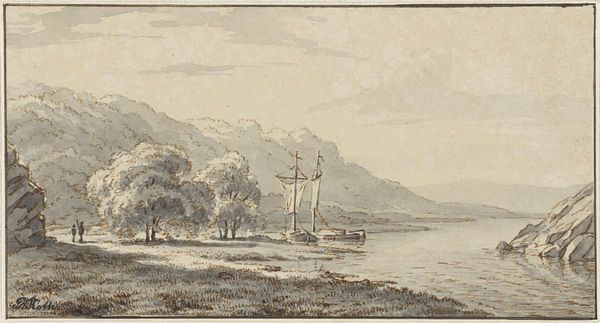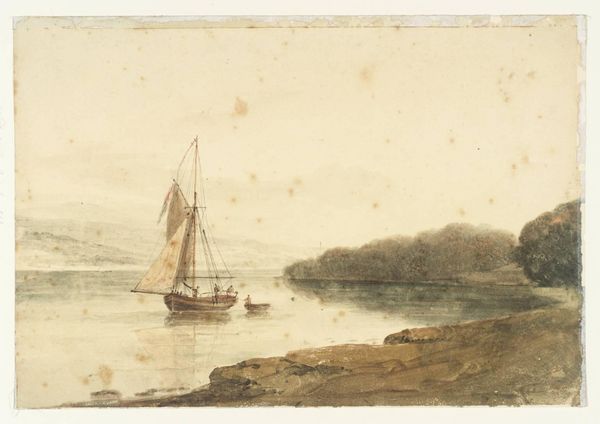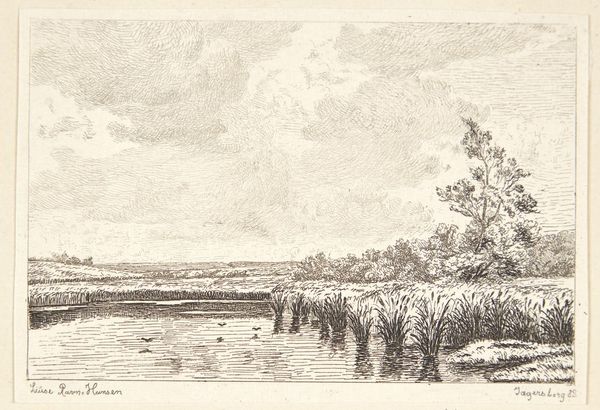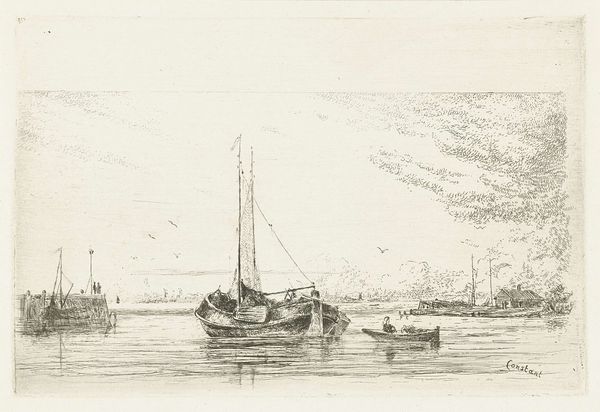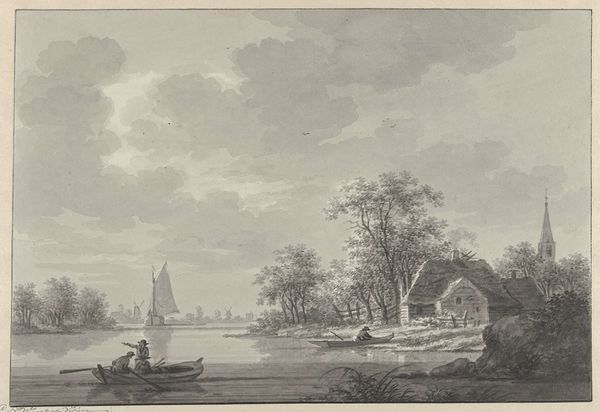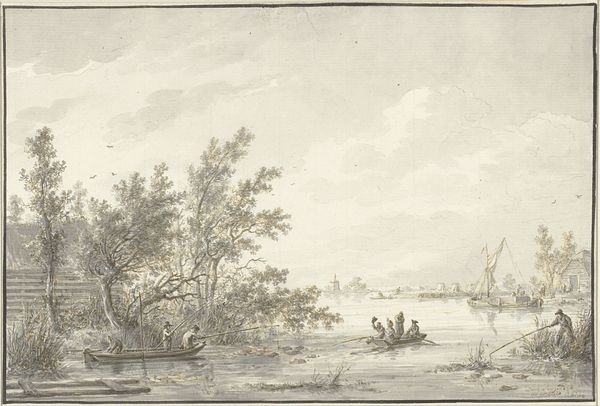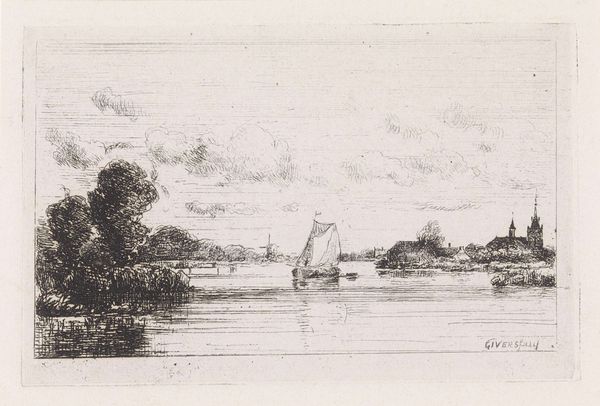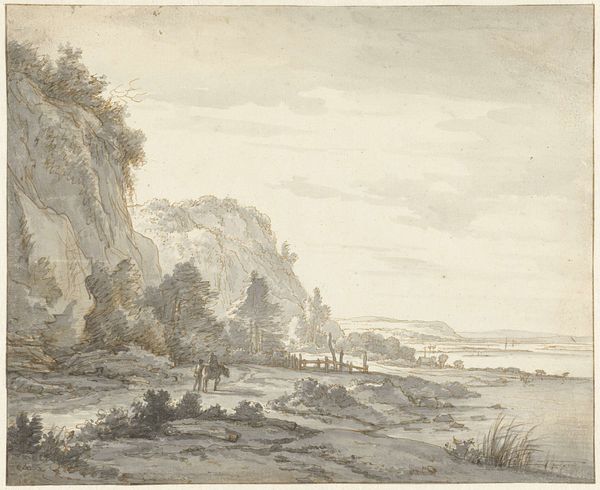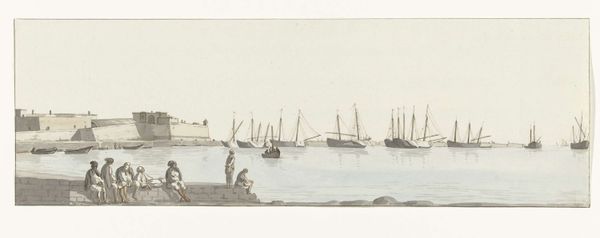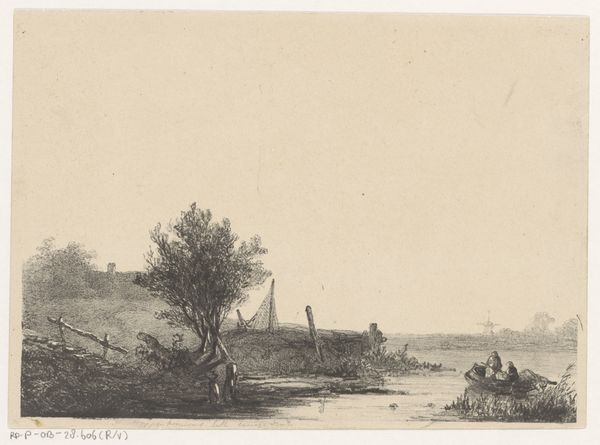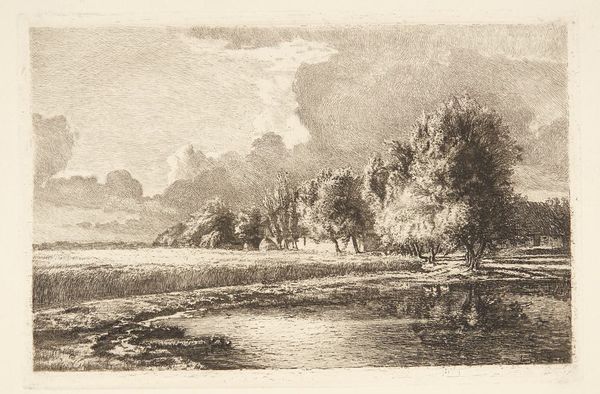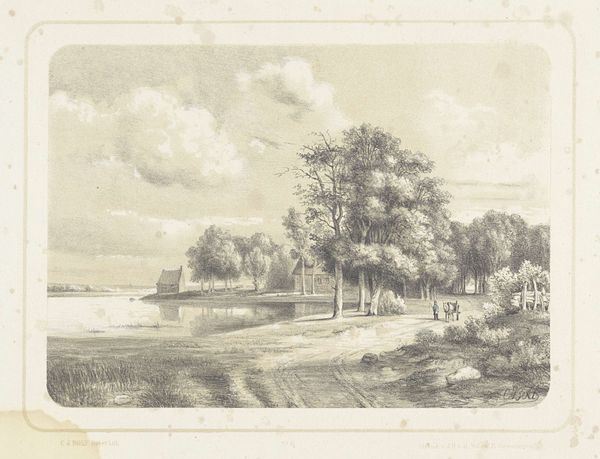
drawing, watercolor, pencil
#
drawing
#
pencil sketch
#
landscape
#
watercolor
#
pencil drawing
#
pencil
#
watercolor
Dimensions: height 217 mm, width 295 mm
Copyright: Rijks Museum: Open Domain
Curator: A quick glance at this sepia-toned image and I feel a surprising sense of peace, an invitation to slow down. What catches your eye first? Editor: Well, the Rijksmuseum holds this intriguing work: "Landschap met gemeerde boten aan een rivieroever," which translates to "Landscape with moored boats on a riverbank," made circa 1855 by Lambertus Hardenberg. It's primarily a pencil drawing with watercolor washes. The use of pencil and watercolor gives it an interesting contrast of precision and fluidity. Curator: The materiality absolutely dictates the tone, doesn’t it? The subdued palette, achieved through the pencil and watercolor, evokes a sense of nostalgia and calm. I’m thinking about the production of this piece: a pencil drawing is generally quick to do. Was this artist preparing for a painting or what was the culture surrounding landscape drawings at the time? Editor: The social function of landscape art like this at that time was linked to a burgeoning sense of national identity. The detailed rendering and realism signal the period's scientific curiosity. Art served a purpose, recording and categorizing. The growth of infrastructure such as canals and river-bound boats like these enabled transportation, economic growth and influenced the landscape. Art of the day frequently depicted progress. How the commoner engages with such a changing landscape also needs our attention. Curator: Fascinating, because it presents as such a quiet scene now. Note the figures on the riverbank, perhaps people waiting for transport, laborers who live along the waterways that enable shipping. The artwork offers insights into the socio-economic landscape of the time: the commodification of nature and its impact on labor practices. I’d say these boats aren’t there just for pretty scenery but underscore a growing market culture. Editor: I concur. These drawings documented the impact of an increasingly industrialized society. What resonates for me is the political implications. Landscapes had patrons, be it the burgeoning merchant class or the established land gentry. They funded and dictated taste, inadvertently shaping a nation's view. This informs how people at the time would respond to such scenes. Curator: That definitely shifts my perception of it, providing more awareness around artistic patronage during this period, giving landscape painting new contexts and levels. Thank you for this context. Editor: Of course. It enriches our understanding to consider the social role art serves during these periods.
Comments
No comments
Be the first to comment and join the conversation on the ultimate creative platform.
